The poem “Mam Shallou” is used as the basis for the creation of an Operatorio with the same name for Mesopotamian Night 2017 production in San Jose. In the article below, Mr. Marcel Josephson gives a historical and literary review of the poem. Mr. Marcel Josephson has been a sponsor, and a consulting scholar for the Mesopotamian Night project. In December 2016, after a consultation with Mr. Josephson, we decided to choose this poem as a basis for our 2017 production.

Marcel Josephson San Jose, California, June 2017
The poem Mam Shallou first came to my attention in Tbilisi in June of 2006 during my visit to Georgia. I saw the original manuscript of the entire poem handwritten by the poet, David Elian himself in 1931 in Ganja, Azerbaijan. The poet was born in 1910 in a village near Van in current day Turkey. During the WWI massacre of Assyrians by Ottomans, his family fled to the Caucasus in 1915 and settled in Ganja. He learned both classical and modern Syriac languages at the school that his father had established. In pursuit of further education, he attended colleges in Leningrad (current day St. Petersburg) and Baku where he studied philosophy and history. He later moved to Tbilisi and taught in schools. He has many works of poetry and literature some of which were published in periodicals of his time in Georgian and Russian languages. His works were also published in Assyrian in the Star of East in Tbilisi. David Elian passed away in 2001 in Moscow.
The poem “Mam Shallou” was published in 1938 in Moscow by the State Literature Print House. This work was also published in 1962 in Germany in Zeitschrift der Deutschen Morgenländischen Gesellschaft (ZDMG), “Journal of the German Oriental Society” Volume 112, Issue 1; using Latin phonetics. In 1991, Journal of Assyrian Academic Studies (JAAS) published a conversion of the ZDMG’s Latin phonetics to vernacular Syriac in their Volume V, Issue 2. The conversion was skillfully done by Shamasha Youaresh Qasha-Mattai. At Assyrian American Association of San Jose, we scripted the entire poem from the original manuscript. This version of the poem is used as the basis for the 2017 Mesopotamian Night production and the creation of “Mam Shallou Operatorio”.
The poem Mam Shallou portrays the day to day life in an Assyrian village in early 1900s and is full of very imaginative interpretations of nature and community’s social dynamic. The Urmie dialect is the prominent language of the poem. The influence of Turkish in daily spoken dialect by Assyrians in this region is clearly noticeable from the vocabulary used in this poem. In this work, the poet illustrates the setting of the village and the occurring incidents so skillfully that the readers who have not seen any Assyrian village will have no difficulty imagining what this specific village looked like. The poem consists of 125 verses in eight acts. The three opening verses are four lines each and there are seven syllables per line. Verses 59 through 62 are six lines each and there are five syllables per line. These four verses are the lyrics of the songs that the young women are singing while strolling through the mountains. The remaining 118 verses are all eight lines each and there are five syllables per line. The five-syllable lines (a total of 968) are recited in two speech segments with a pause in between; either 2+3 or 3+2 syllables. This scheme of poetry is very old in our literature and was used by Balai of Qenneshrin in 5th century and it was particularly the preferred poetry style of Mar Ephraem Syrus (300-373) for his homilies. There are also metrical speech elements in the poem known in old Assyrian as Mimra. Mimra made it easy to memorize the poems.
The poem Mam Shallou is not just a well written story. It is indeed a master piece; not only because it uses a very sophisticated poetry scheme, but also because it bears a very strong artistry element. The reader stays connected with the events throughout the poem as they take place. There are many emotional up and downs within different scenes. The transition from one scene to the next is seamless and the usage of idioms as spoken by local Assyrians adds to the richness of this work. This poem may sound like a fictional work written for a play. According to Reverend Lazarus Yaure who was involved with 1962 publication of this work, a careful examination of the content reveals that it is a tale of Assyrian villagers being oppressed by violent landowners and government representatives.
As such, the poem has a distressed ending. An enthusiast of our literature and poetry, and a talented poet himself, Edison Ebrahimi has taken the last 32 verses of this poem where the injustice and violence reach their peak, and converted them into a totally different chain of events while staying within the original poetry style and metrics. Edison’s imaginative creation brings courage, hope, liberation of oppressed, and celebration by villagers to the conclusion of this extraordinary poetry work. The libretto for Mam Shallou musical is indeed a joint effort by two exceptional Assyrian literature and poetry talents who never met; David Elian (1910-2001) and Edison Ebrahimi, a current resident of San Jose, CA.
To top it all off, our beloved and gifted pastor, Reverend Samuel Khangaldy with his creative musical composition turns this astonishing libretto into a remarkable musical providing us through the performing arts a perspective on the way of life and surrounding conditions in a particular region of our ancestral homelands a century ago. The Mam Shallou musical will be remembered as an exceptional work among other Mesopotamian Night’s outstanding productions.


